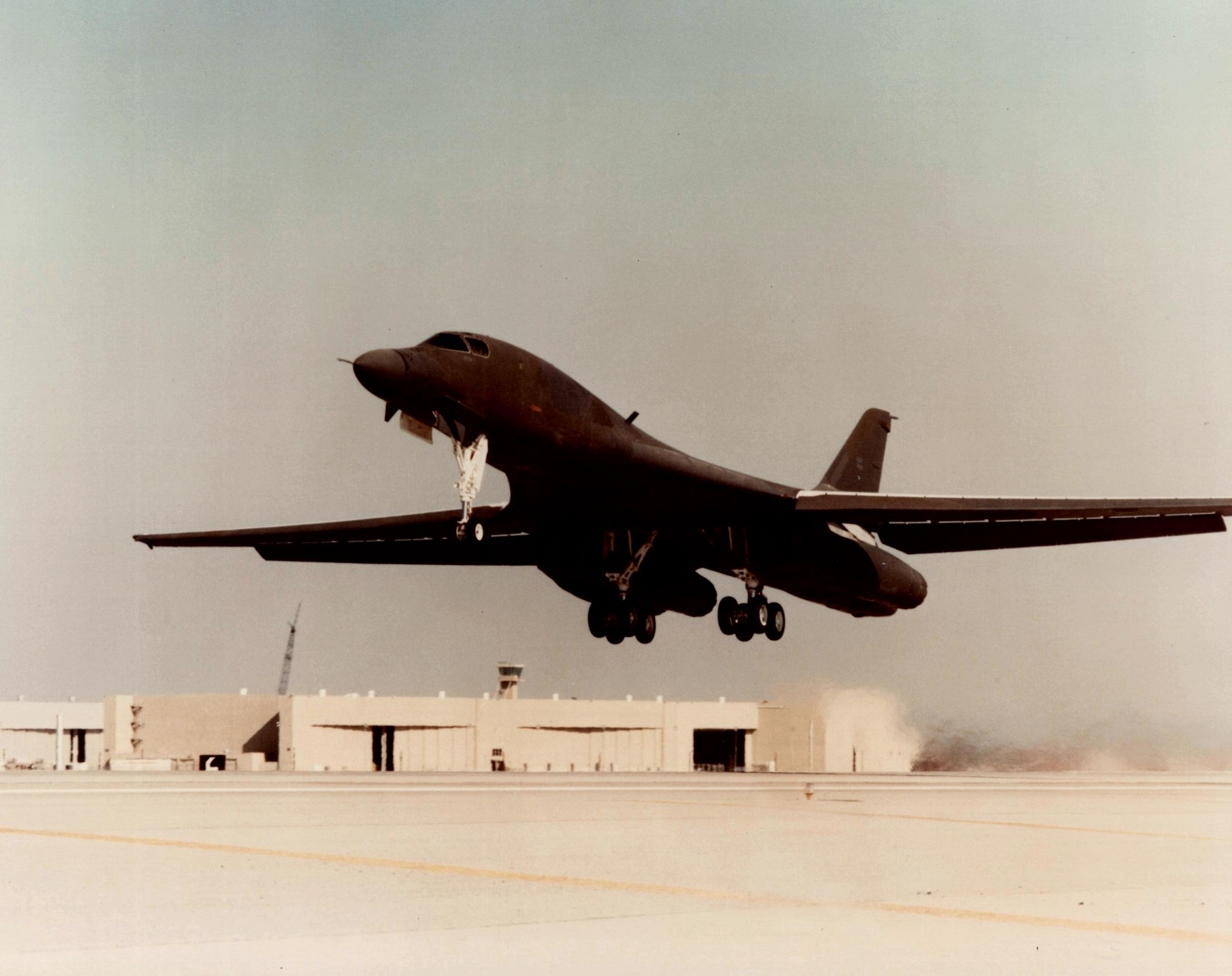

Rockwell test pilot Mervyn Leroy Evenson (Colonel, U.S.Air Force, retired) was the aircraft commander, with co-pilot Lieutenant Colonel Leroy Benjamin Schroeder; Major S.A. Henry, Offensive Systems Officer; Captain D.E. Hamilton, Defensive Systems Officer.
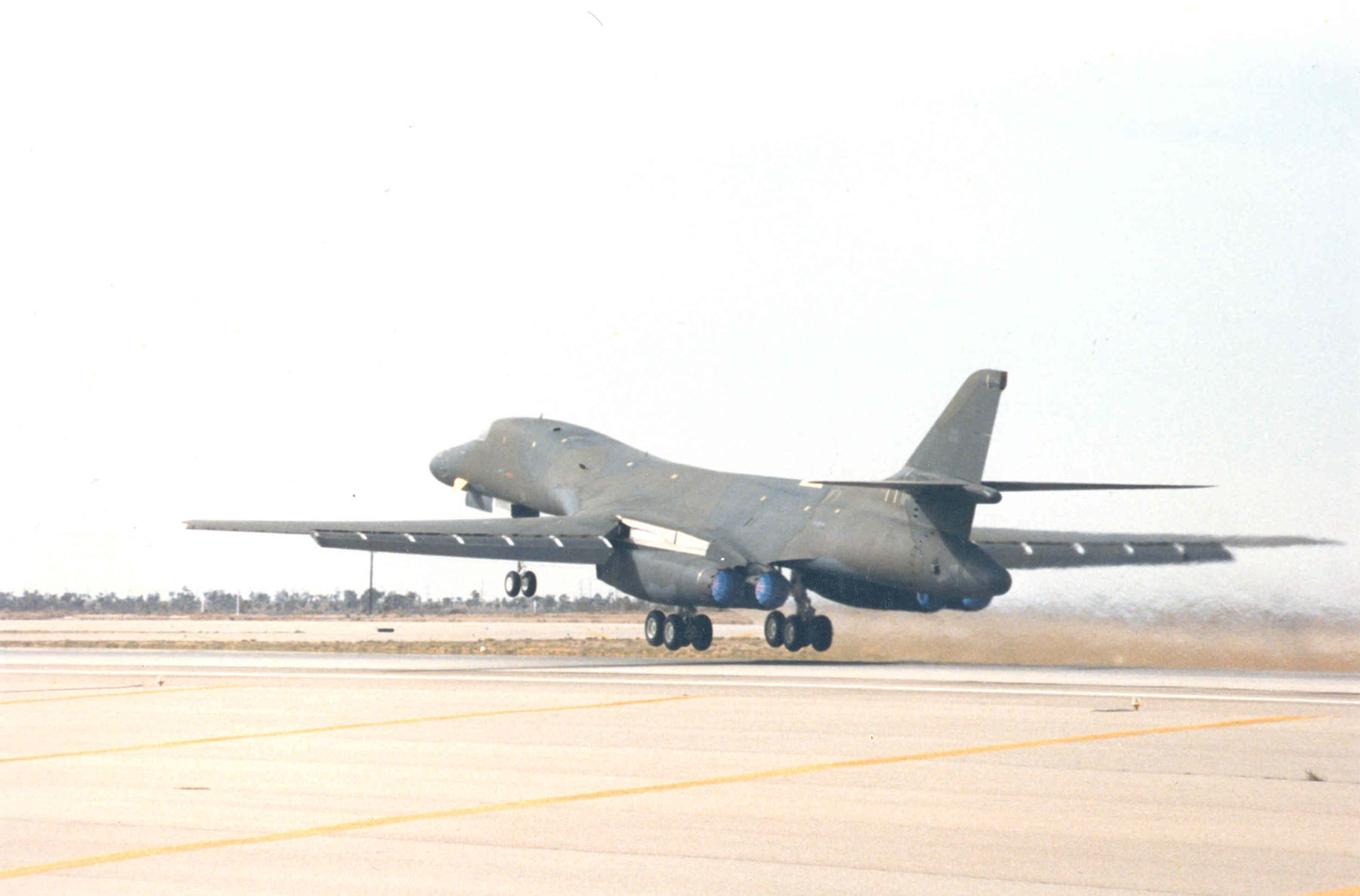
After 3 hours, 20 minutes, the B-1B landed at Edwards Air Force Base where it would enter a flight test program.
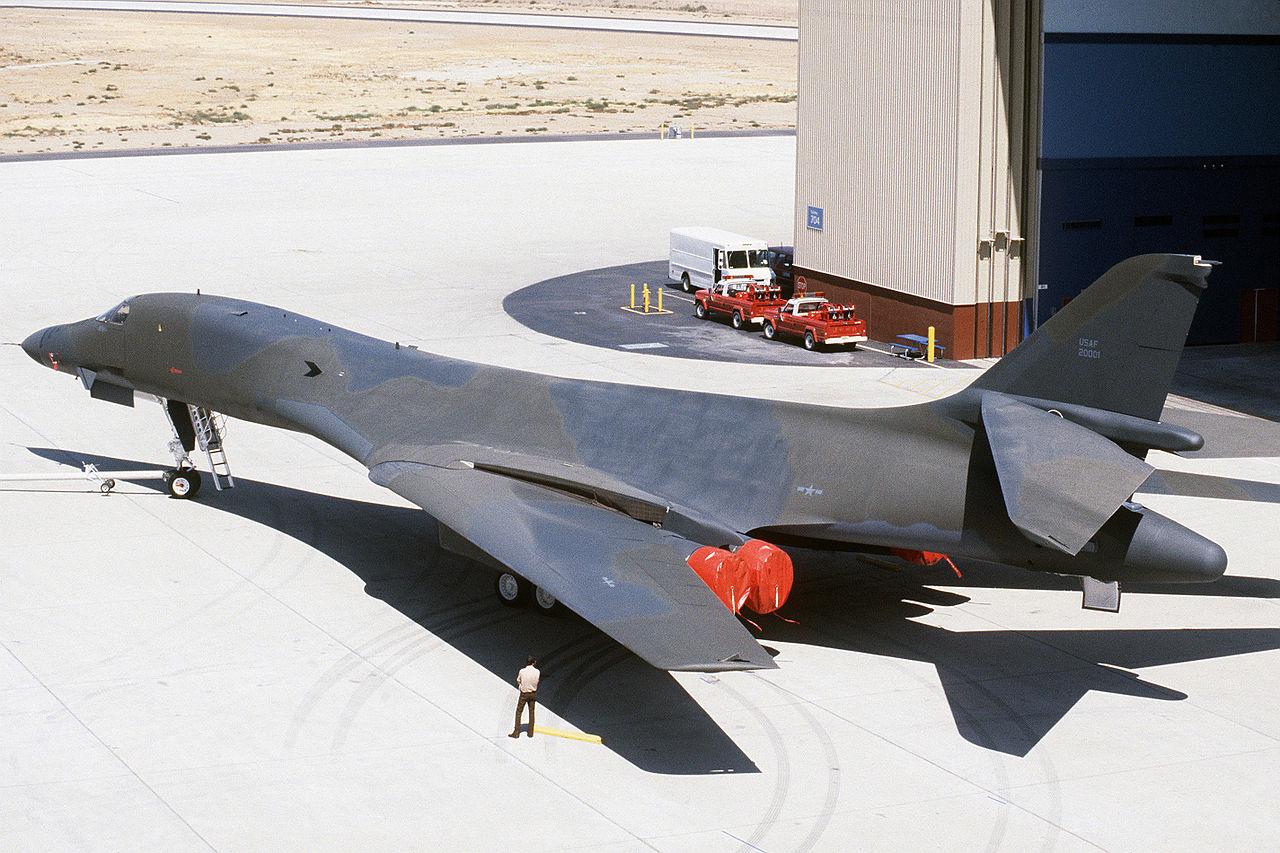
The Rockwell International B-1B Lancer is a supersonic intercontinental bomber capable of performing strategic or tactical missions. It is operated by a flight crew of four.
The B-1B is 147 feet, 2.61 inches (44.8719 meters) long, with the wing span varying from 86 feet, 8.00 inches (26.4160 meters) at 67.5° sweep to 136 feet, 8.17 inches (41.6603 meters) at when fully extended to 15° sweep. It is 33 feet, 7.26 inches (10.2428 meters) high to the top of the vertical fin. The bomber’s empty weight is approximately 180,500 pounds (81,873 kilograms). Its maximum weight in flight is 477,000 pounds (216,634 kilograms). The internal payload is up to 75,000 pounds (34,019 kilograms).

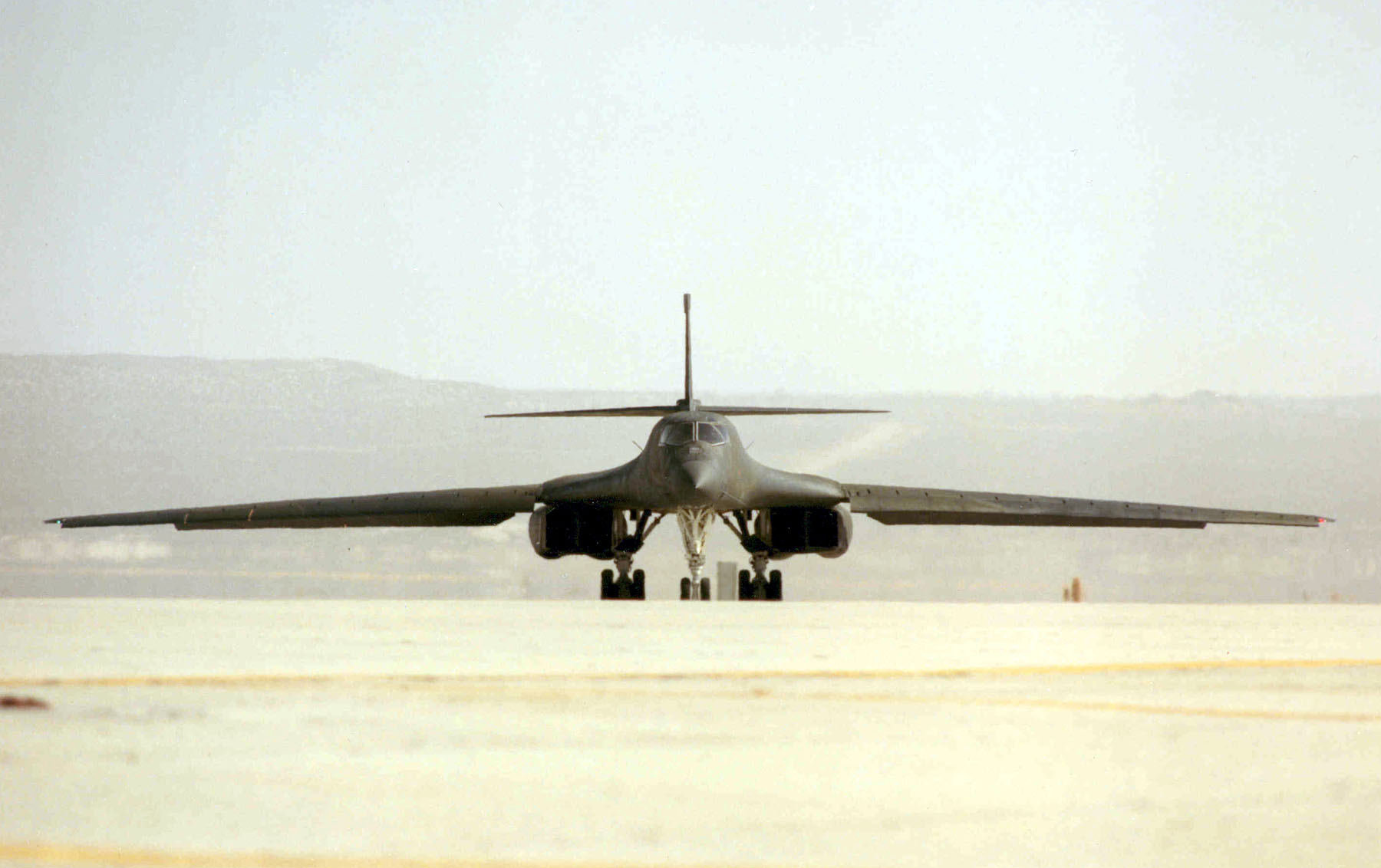
“The Bone” has a maximum speed of Mach 1.2 at Sea Level (913 miles per hour, or 1,470 kilometers per hour). The service ceiling is “over 30,000 feet” (9,144 meters). The Lancer’s maximum range is “intercontinental, unrefueled.”
It can carry up to 84 Mk.82 500-pound (226.8 kilogram) bombs, 24 Mk.84 2,000-pound (907.2 kilogram) bombs or other weapons in three weapons bays. The B-1B was built with the capability to carry 24 B61 thermonuclear bombs, though, since 2007, the fleet no longer has this capability.
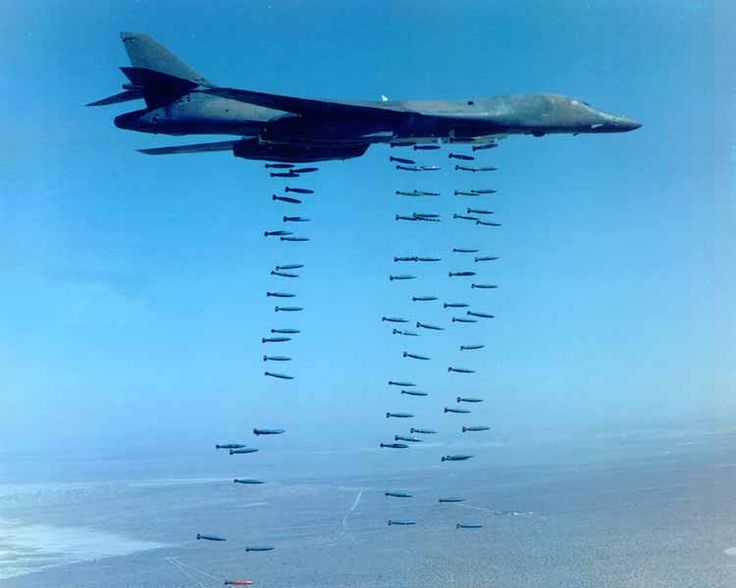
100 B-1B Lancers were built between 1983 and 1988. As of September 2021, 45 B-1B bombers remained the active Air Force inventory. The Air Force plans upgrades to the aircraft and to keep it in service until 2033.
To comply with the START weapons treaty, B-1B 82-0001 was scrapped at Ellsworth Air Force Base, South Dakota, in the mid-1990s.
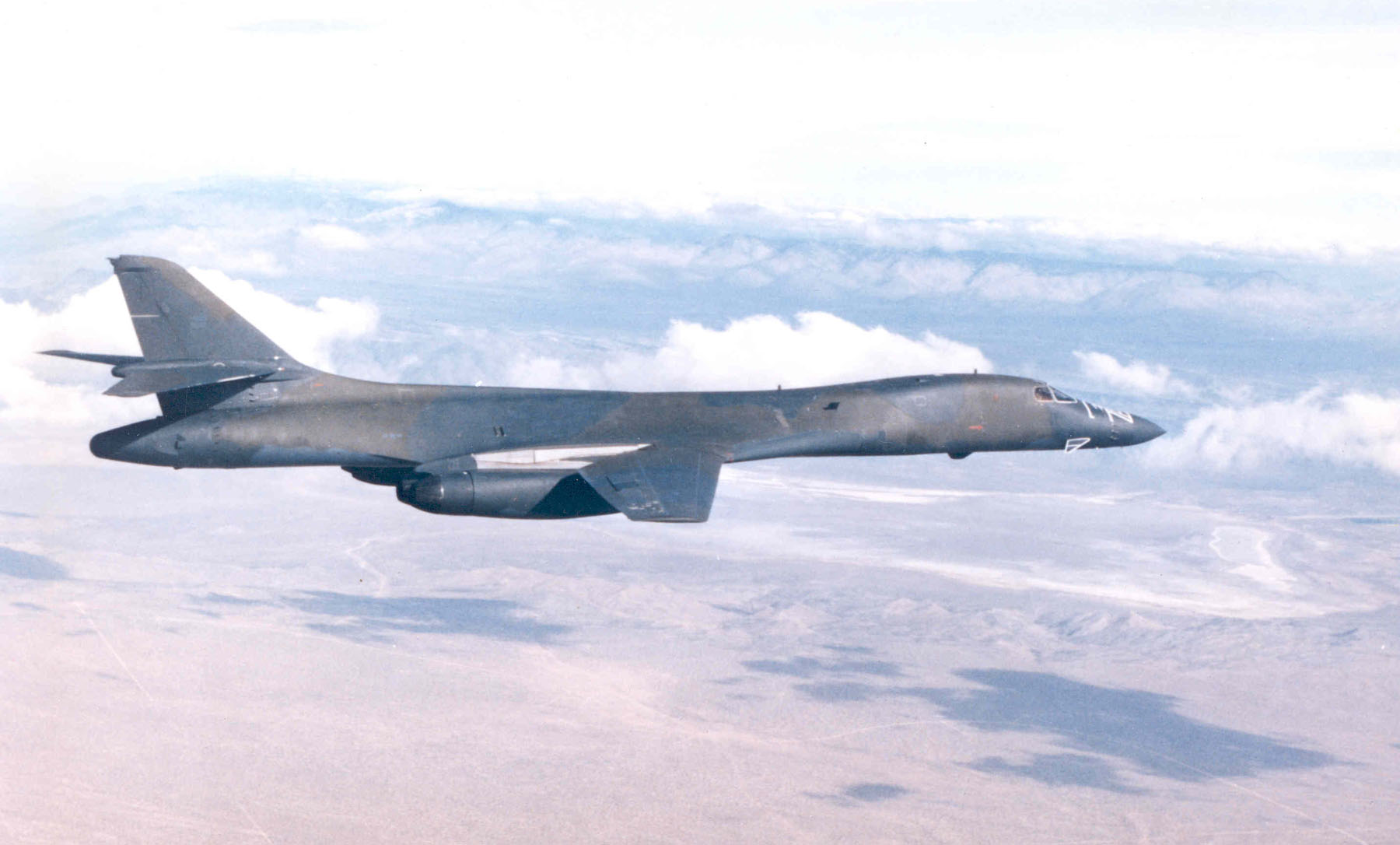
© 2018, Bryan R. Swopes